You must be logged in to rate content!
12 minute(s) of a 891 minute read
4-16-2019
Thanks! I figured if I fail or see issues in anything it's just best to share.. no need to only show the successes.. maybe I'll help someone else out too.
At lunch I got a new solenoid and fuse block for the fuel pumps. I'll make a panel that mounts to the batter tray in the trunk, to have the solenoid and all fuses easily accessible versus hidden under the car and inaccessible.
The solenoid is an 85A unit with a dedicated ground stud, just to be sure of getting a good ground on it, and on its output terminal I mounted a Blue Sea 4 fuse distribution block. This fuse block can handle 30A per channel or 100A total, and I will use it to have a 25A fuse for each individual pump's 10ga power wire.. so it'll be easier to diagnose any issues in the future. Also there's room to add more pumps if needed.....

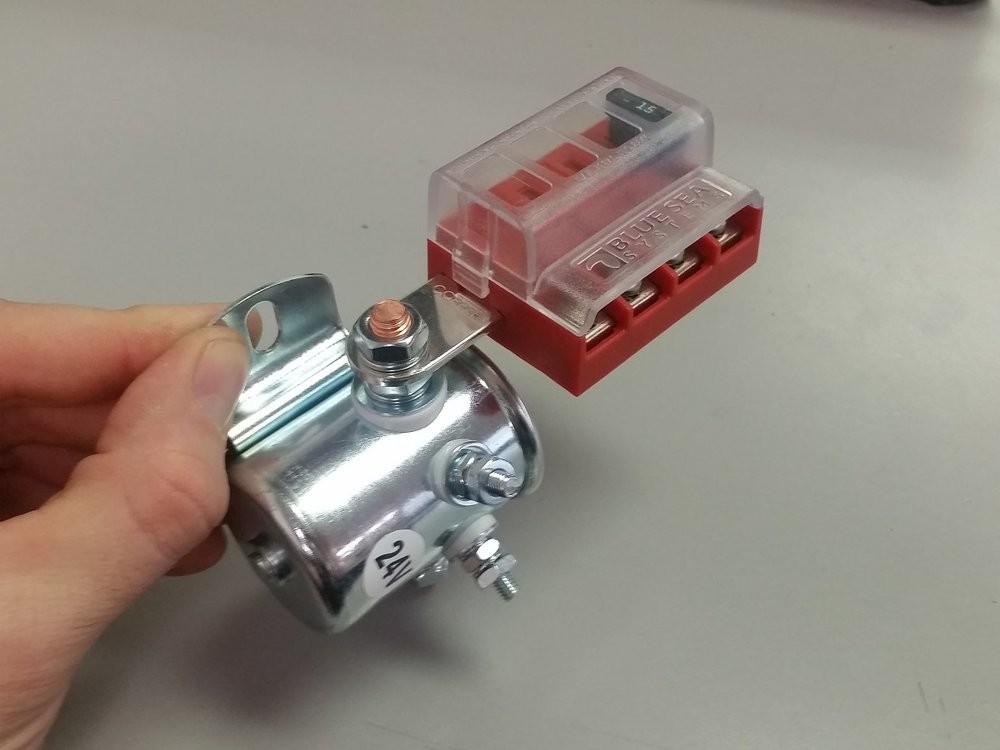
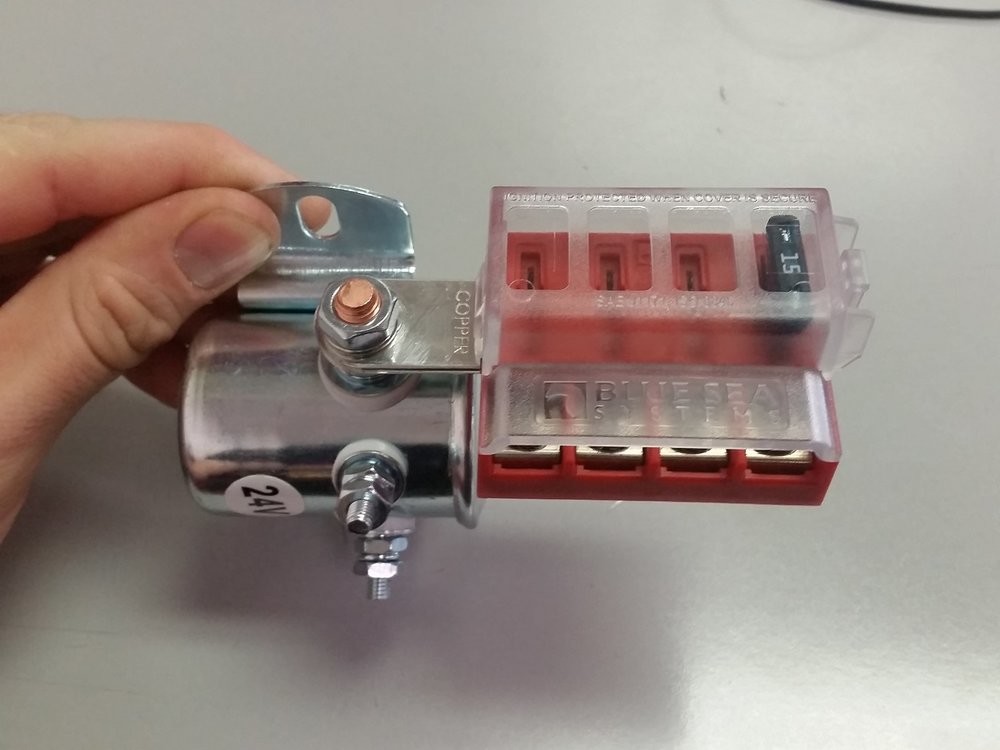
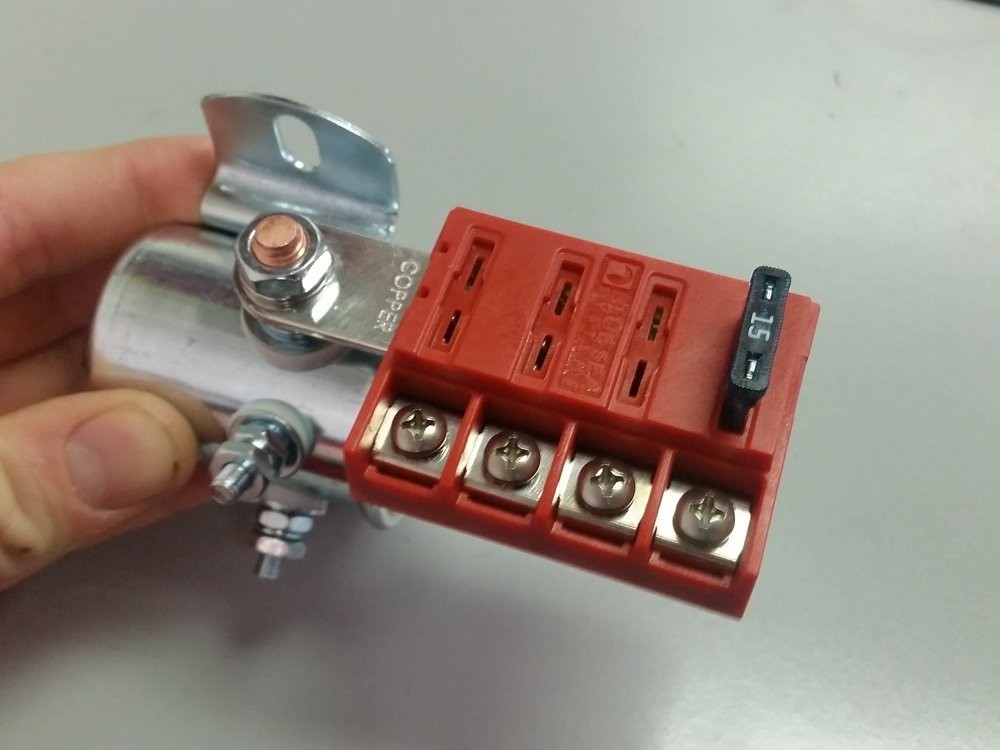
4-22-2019
Ok... monster update time. The girlfriend has been away in Maui for the last week which meant I could really get some work done this past week (at night).. and then 35 hours total work between Friday 10am and Sunday 9pm! Holy crap.
Got the gas tank all wrapped up, used the fixturing table at work to set my maximum depths and perimeter of where I need to keep the pumps and stuff within to be able to still install it into the tank.
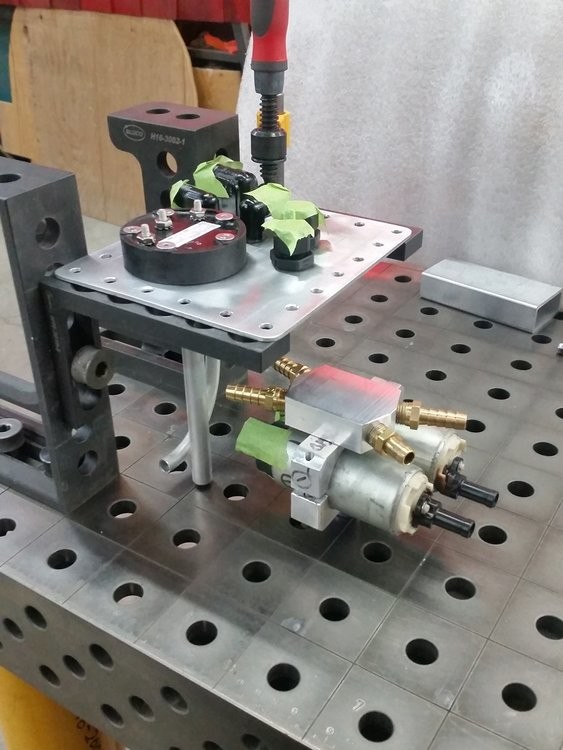
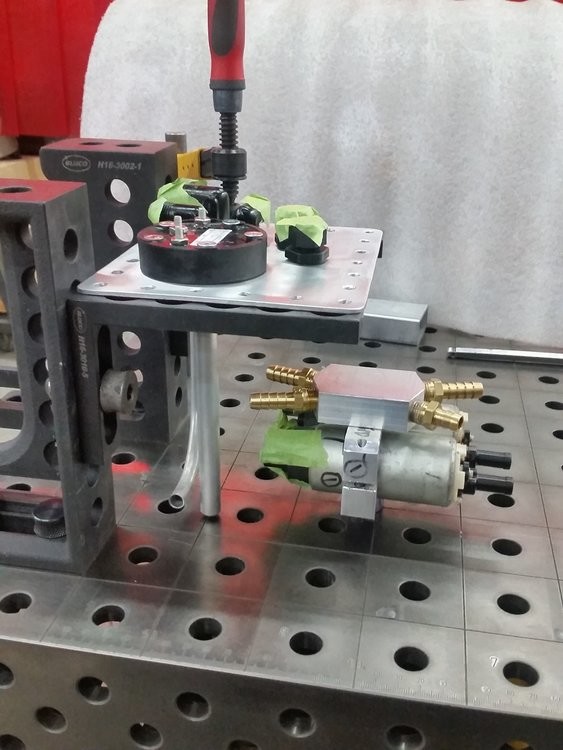
I made a Y-block that takes two 1/8" NPT threads (for 5/16" hose barb fittings) and turns into one 3/8" NPT thread (for this wonky 90degree male-NPT-to-female-8AN..
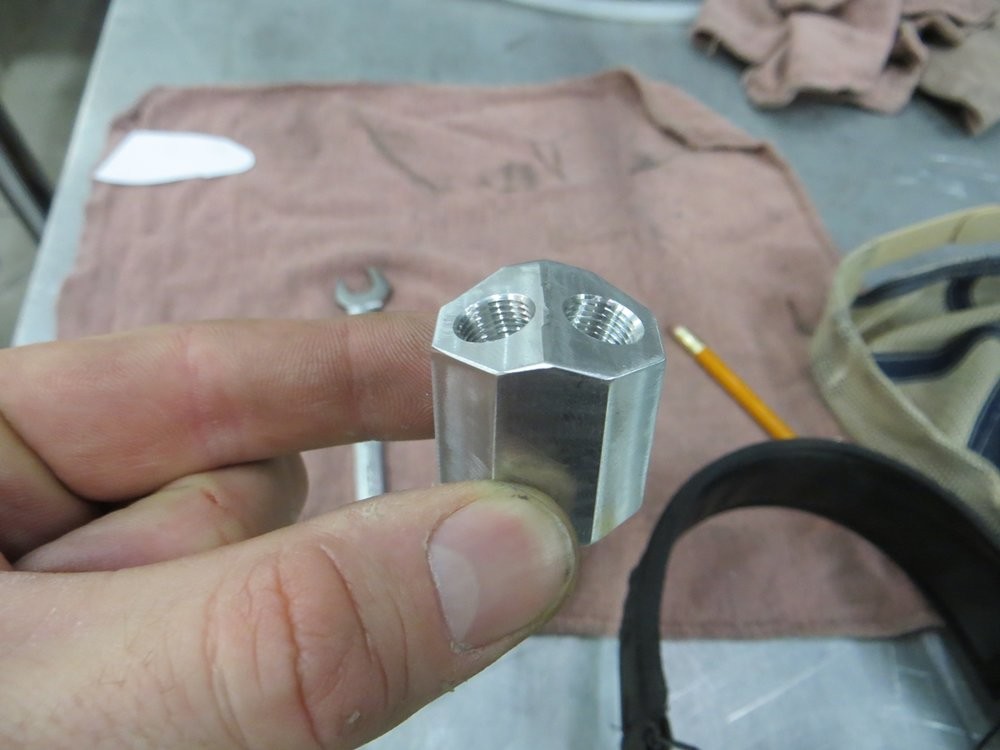
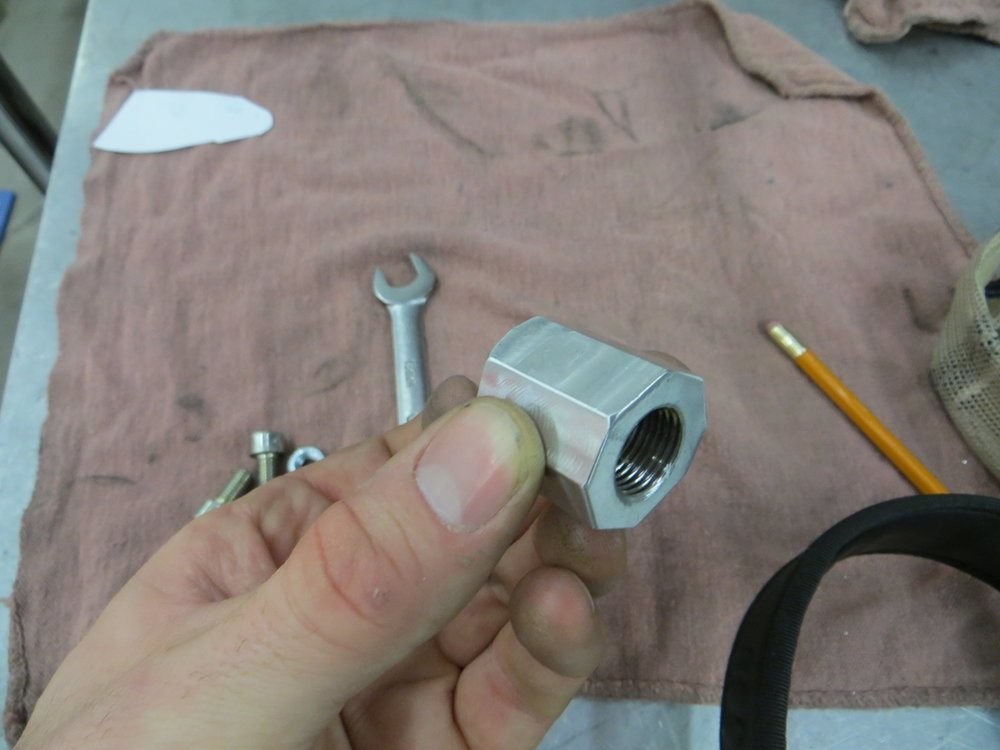
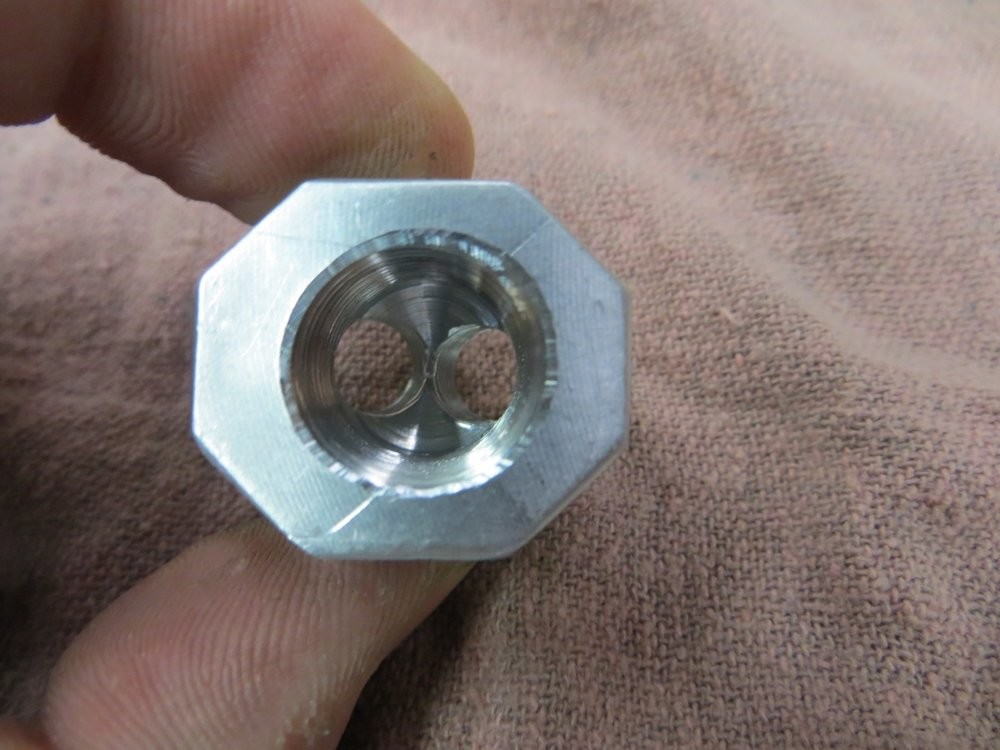

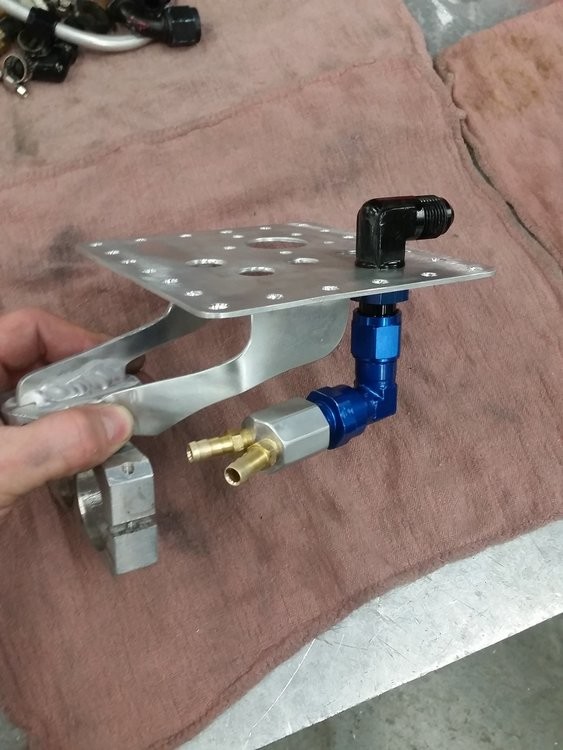
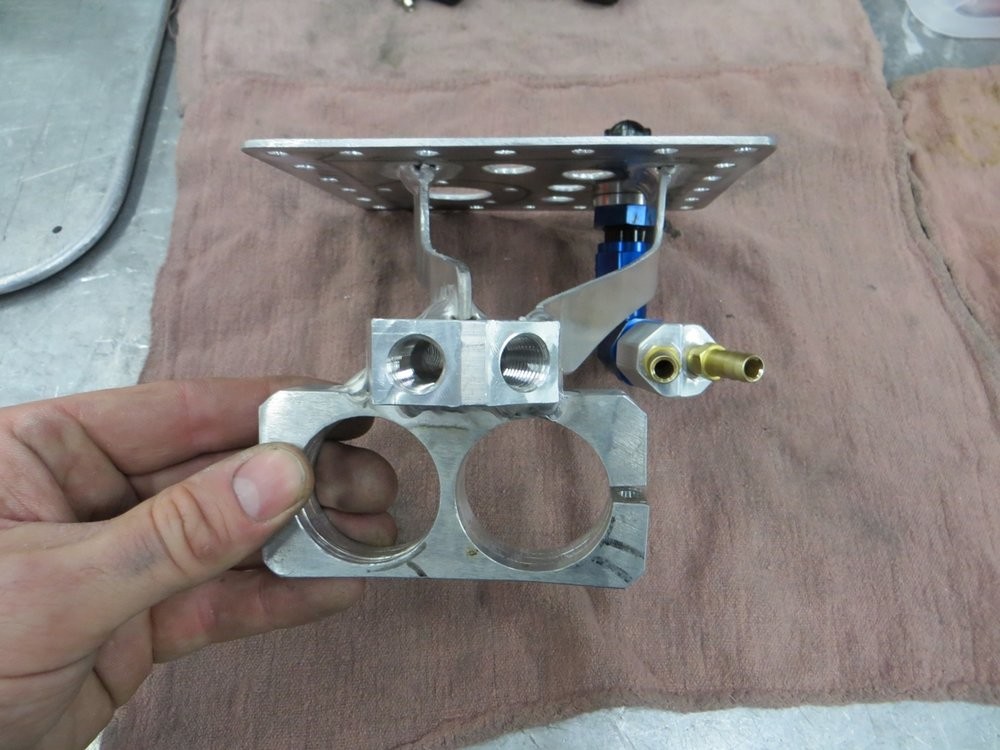
Always important step... constantly making sure things still install into the tank!!....
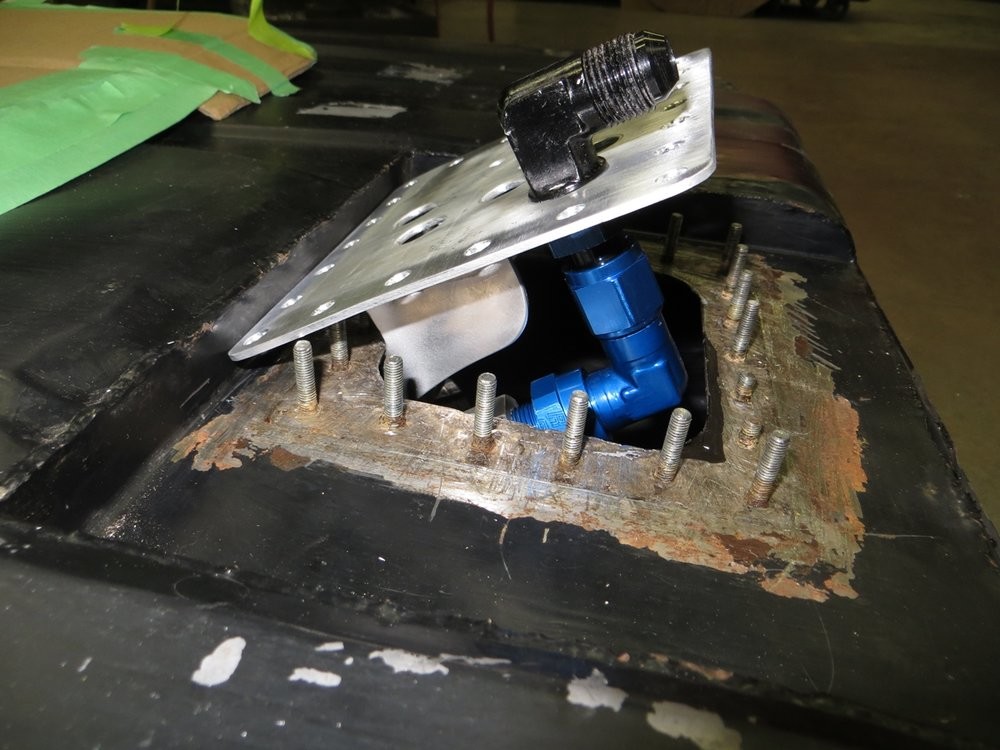
What I usually like doing is making threaded backing plates for stuff that needs to bolt on.. it just makes life so much easier to not have to fiddle with holding a nut with a wrench. Below is the SpeedHut brand capacitance fuel level sender...
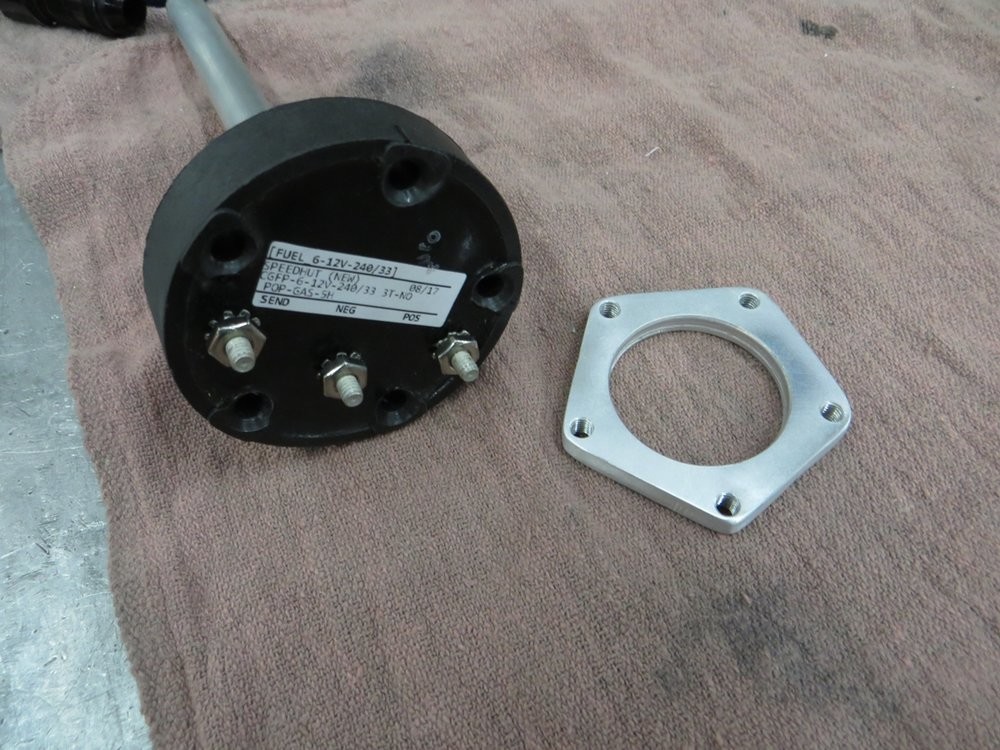
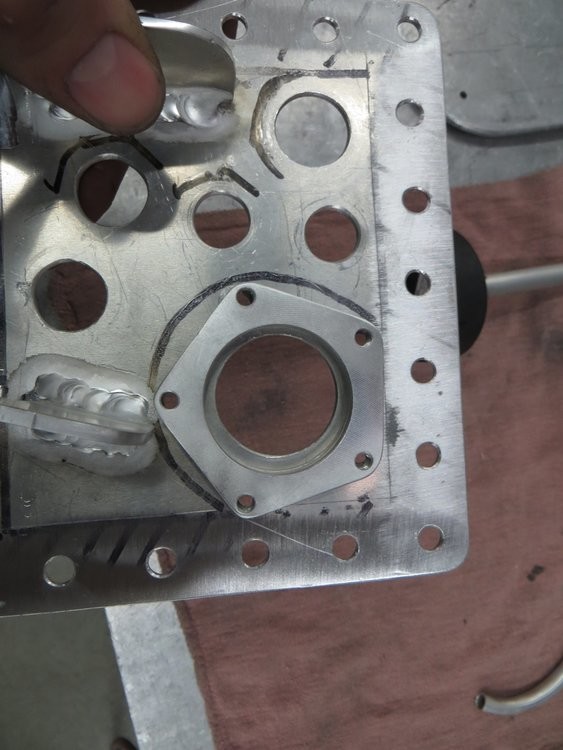
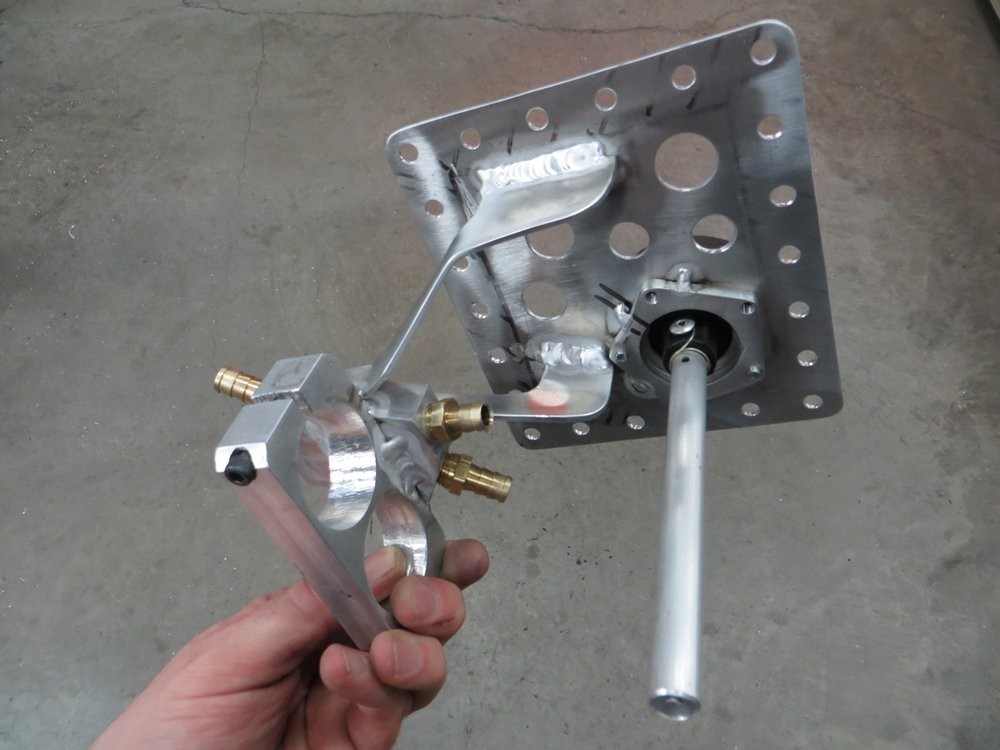
So here's the franken-monster fuel pump assembly. It looks aggressively large, but this was using primarily 3/8" hose for least restriction, and allowing very conservative bend radii to make sure the flow is happy...
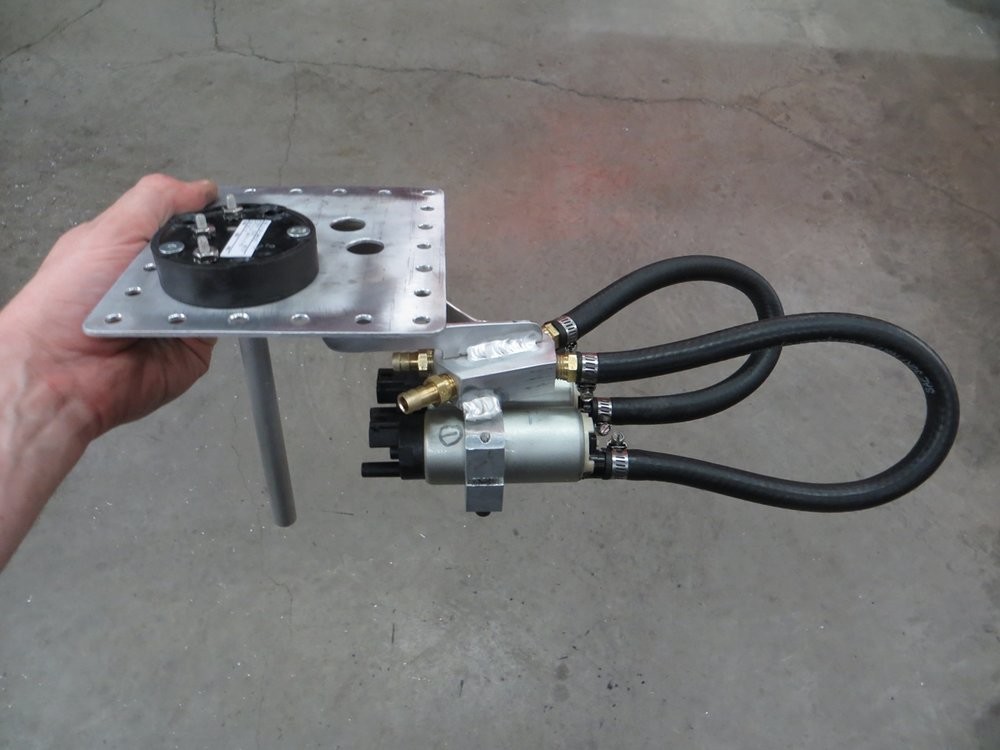

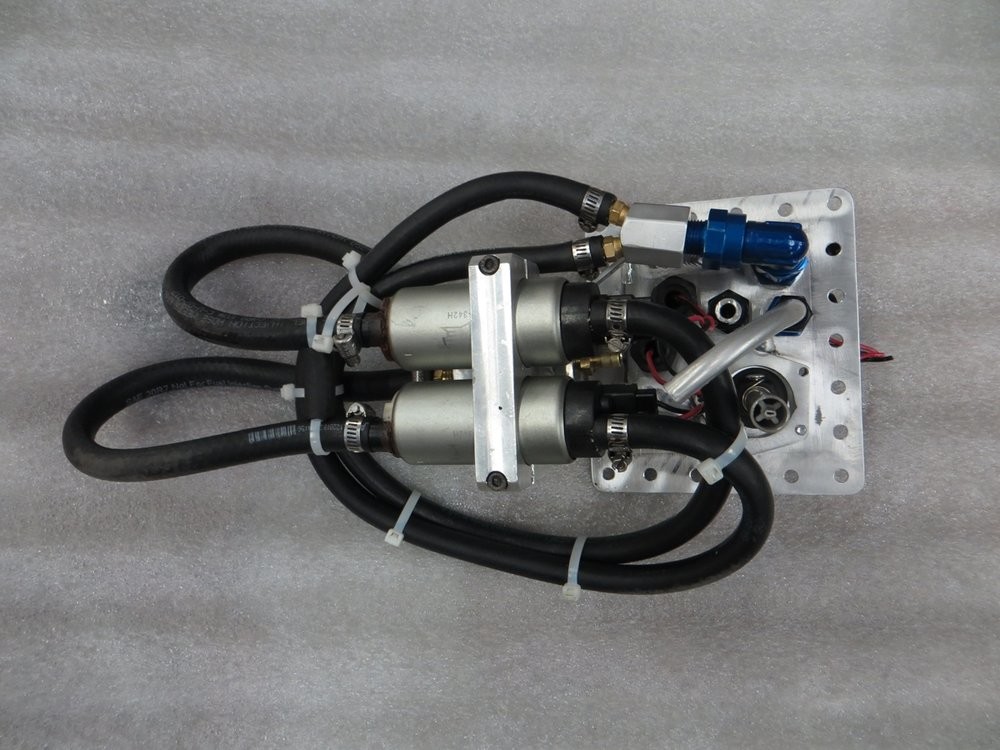
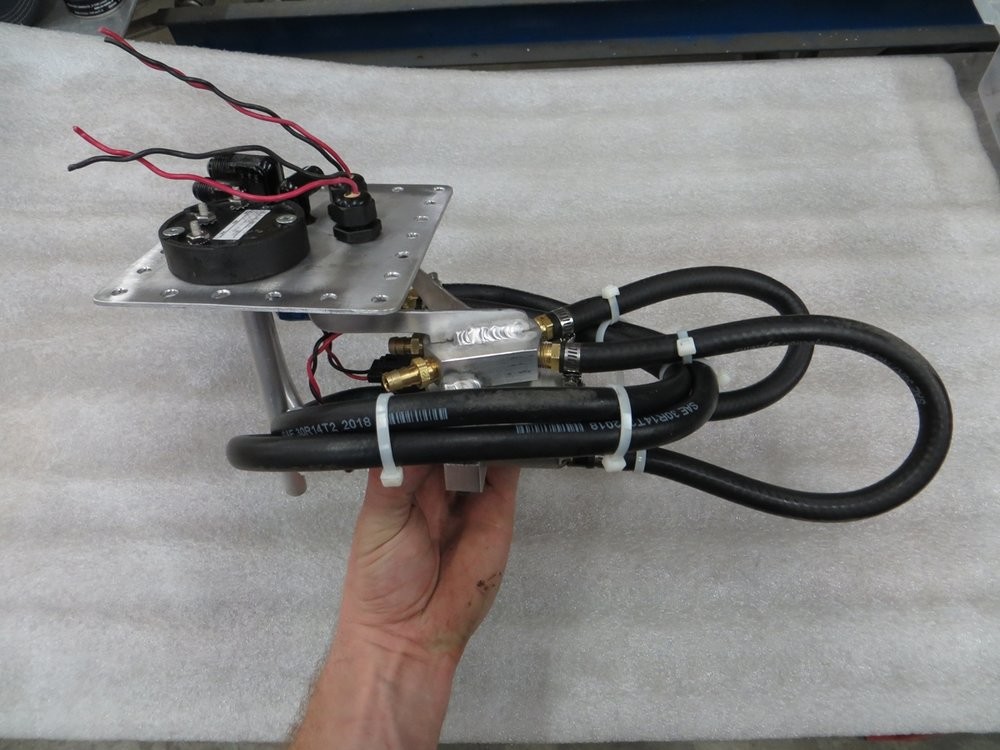
This is the layout of the Holley Hydramat 15"x3" mats...
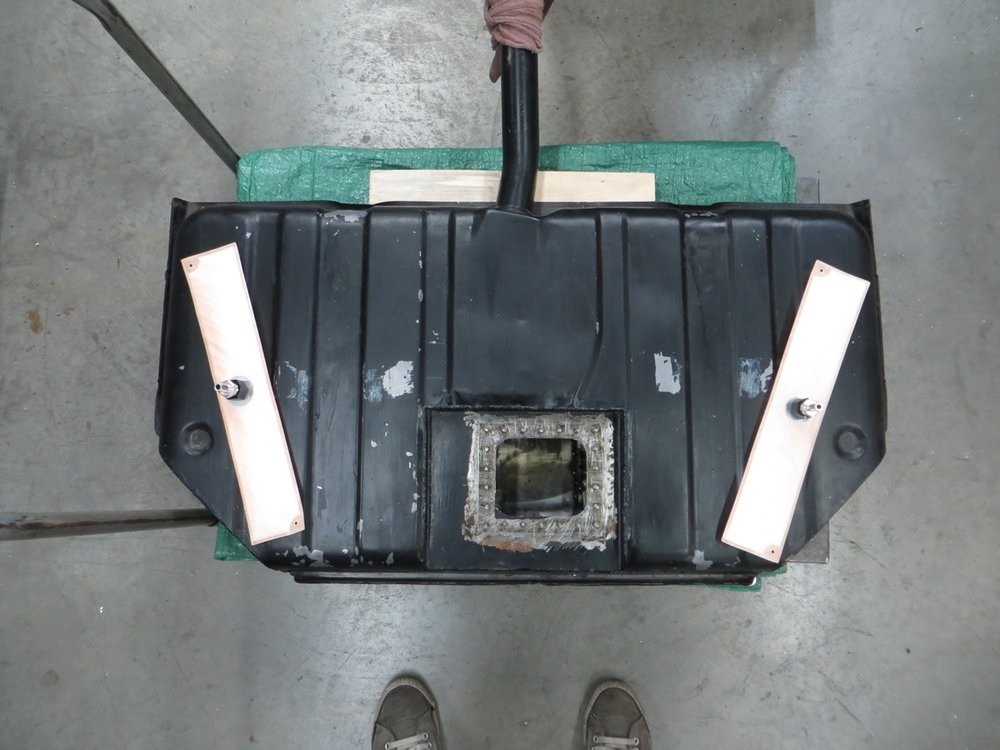
Attached the 3/8" hose to the Hydramats before installing them, then trimmed to length once installed just to make sure I didn't accidentally cut the hoses unworkably short if I just guessed...
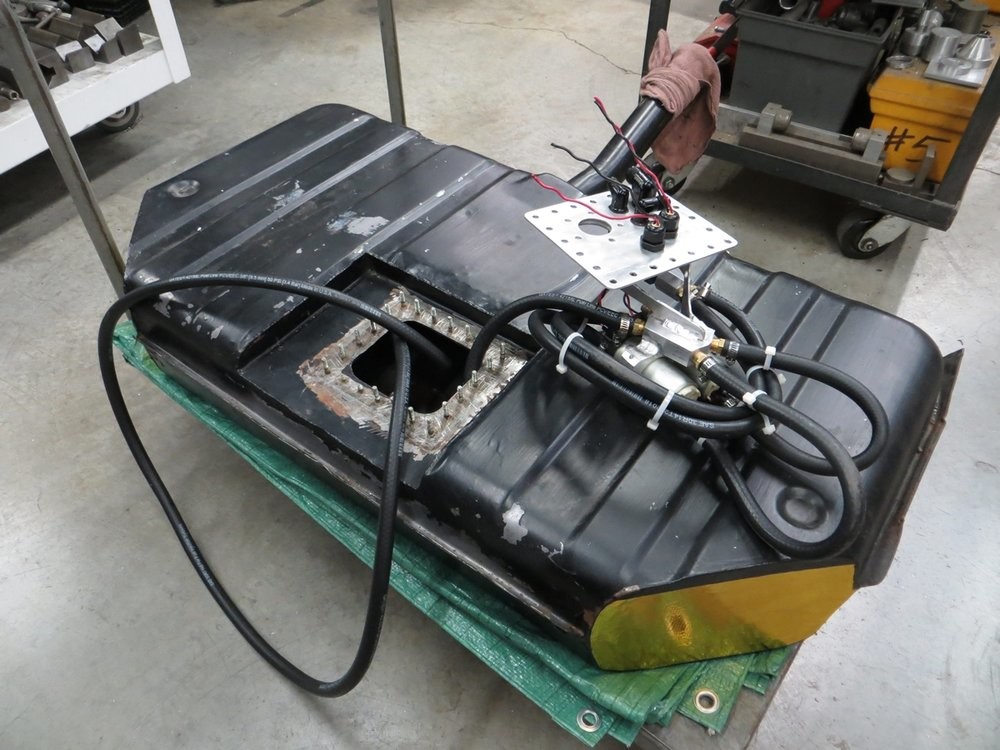
Test-fitting... oi!
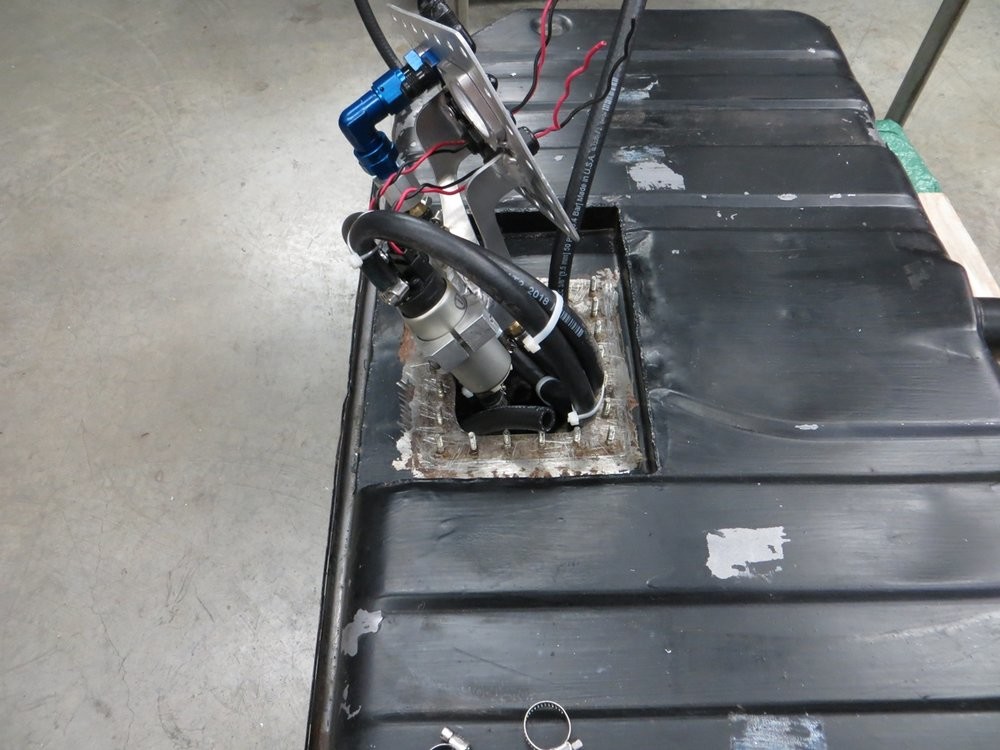
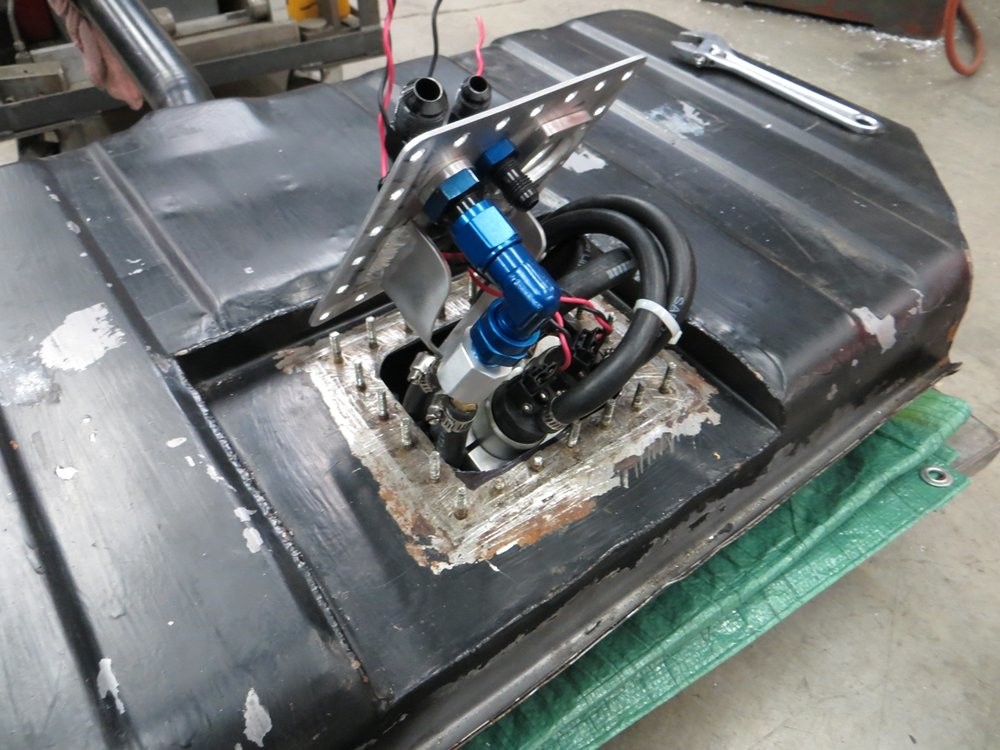
I was careful to squeeze the hoses in as I was working the pump assembly in, and constantly inspecting for cuts/damage. Despite what the tank cutout looks like in the pics, it's actually got a very smooth/rounded edge on the access hole.. I had no issues running my finger on it without cutting or even scratching myself...
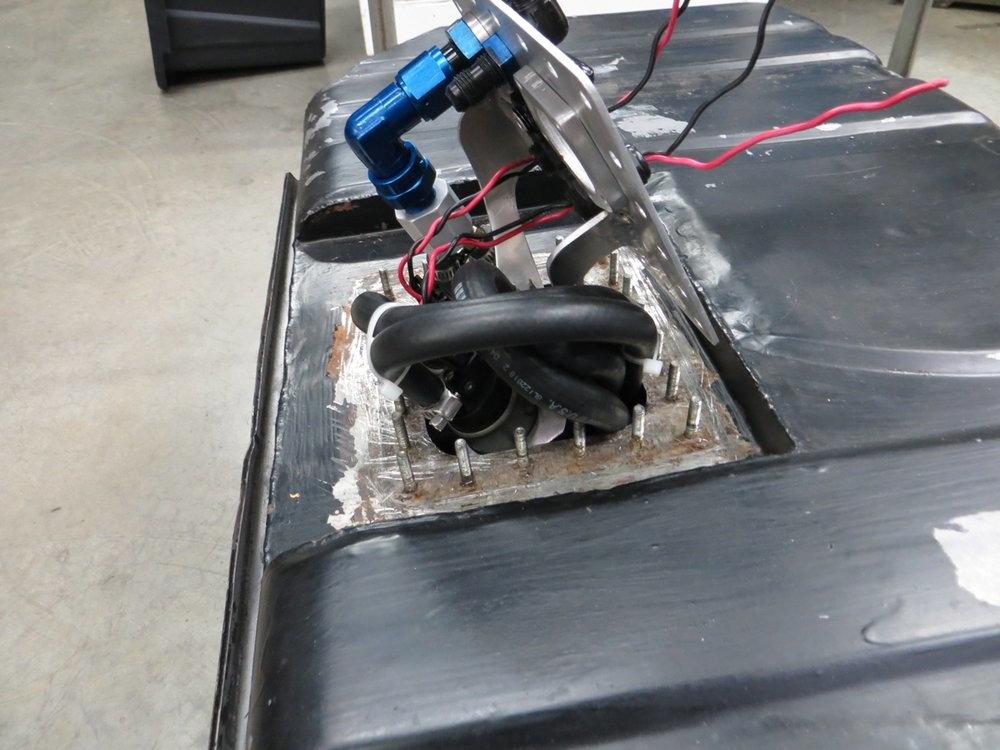
Here is the assembly installed! In this pic I was doing some testing to make sure the pumps built pressure and flowed without interruption as I tilted the gas tank side-to-side, with about 10L of gas in it....
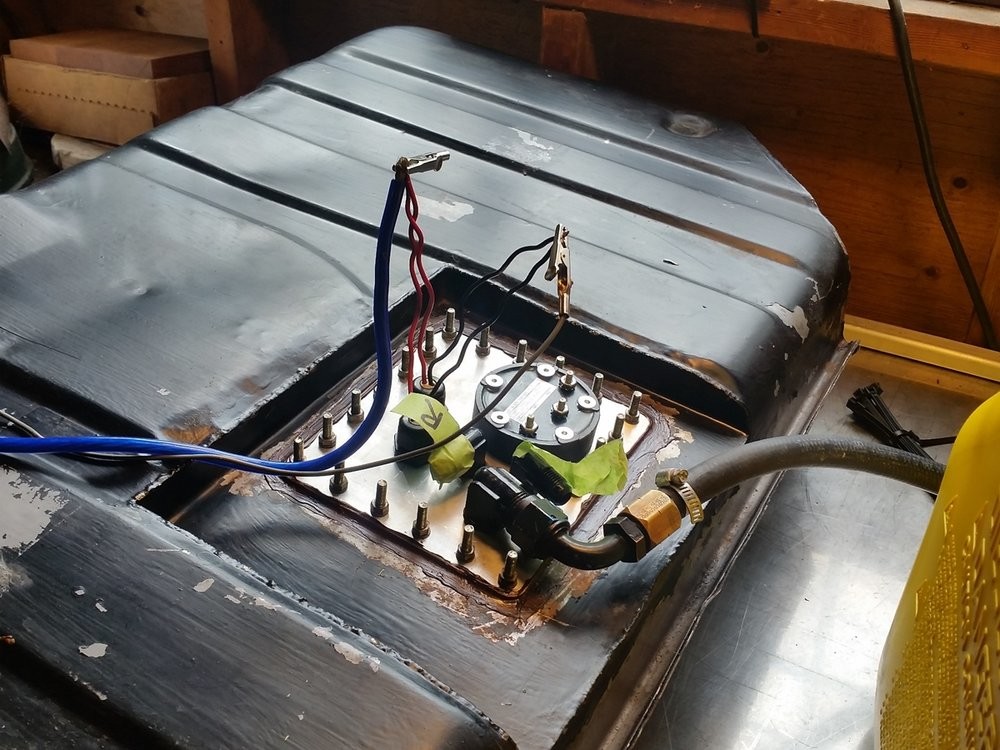
Next up was to start wiring the pumps. On the right are the previous pump wires at the Deutsch connector, and I'm pretty embarrassed by the crimps I did from 5+ years. On the left is a much better style 360-degree-crimp terminal that I will be using for this connector, which should allow a better electrical contact...
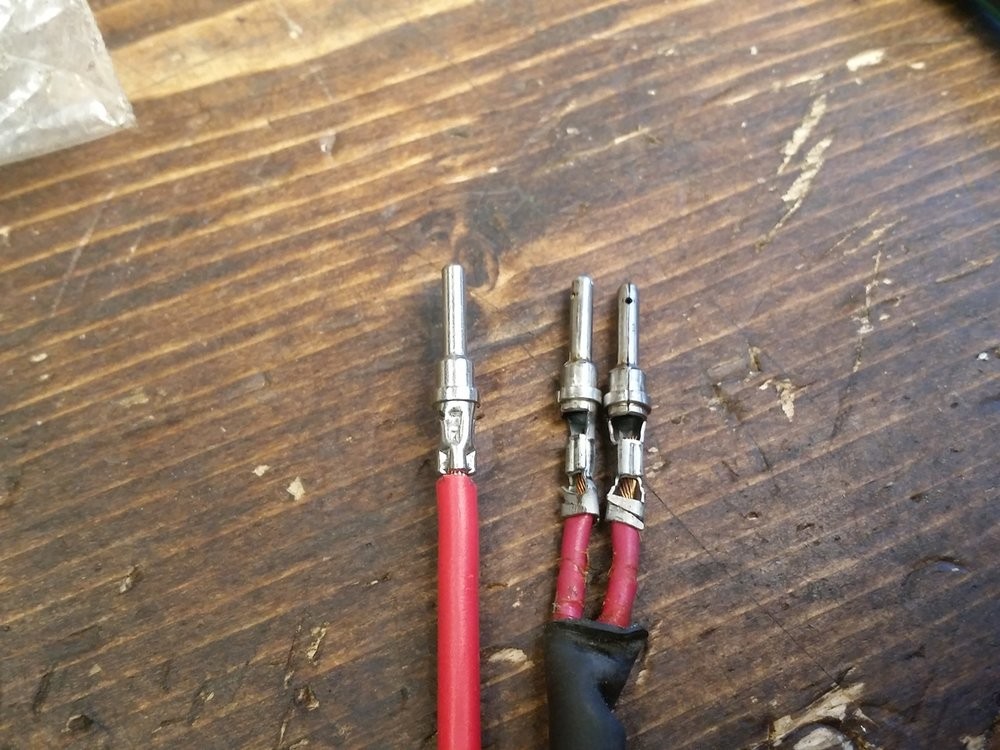
Here's the four-sided Deutsch crimping tool I got on eBay for I think $10. This one has crimping dies for 12ga, however I don't have any other sizes nor do I know if they're swappable (although I imagine they should be).
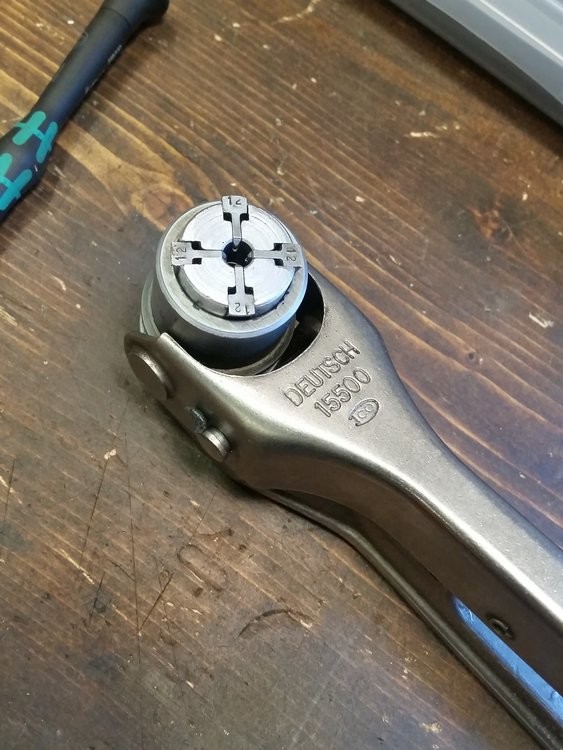
The cool thing is this tool has "Grumman" etched in it. Is it possible it was once used to wire jet fighters...???
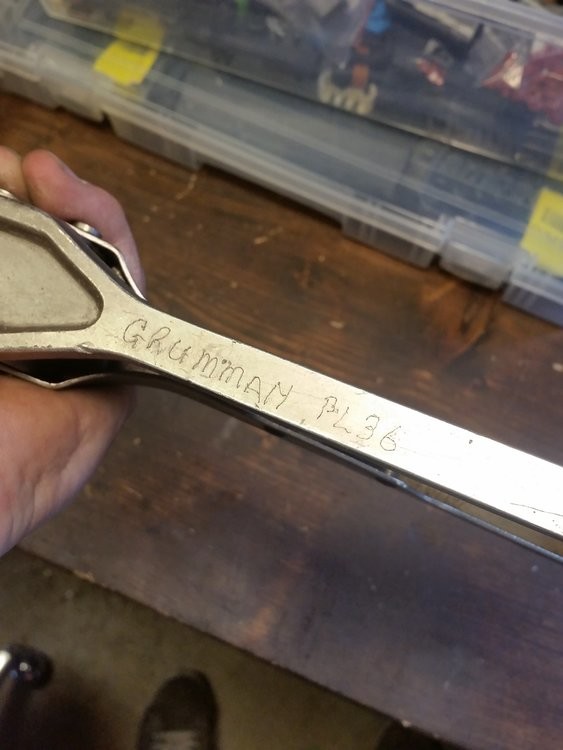
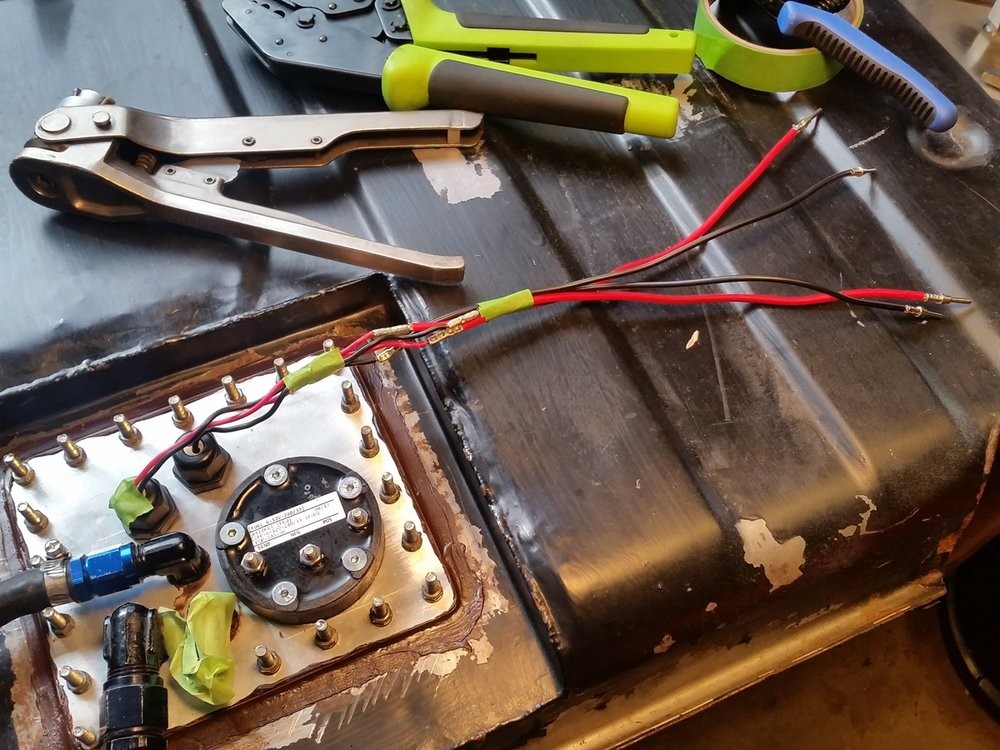
12ga power wires and 14ga ground wires. I'm grounding straight to the battery, but more on that in a bit...
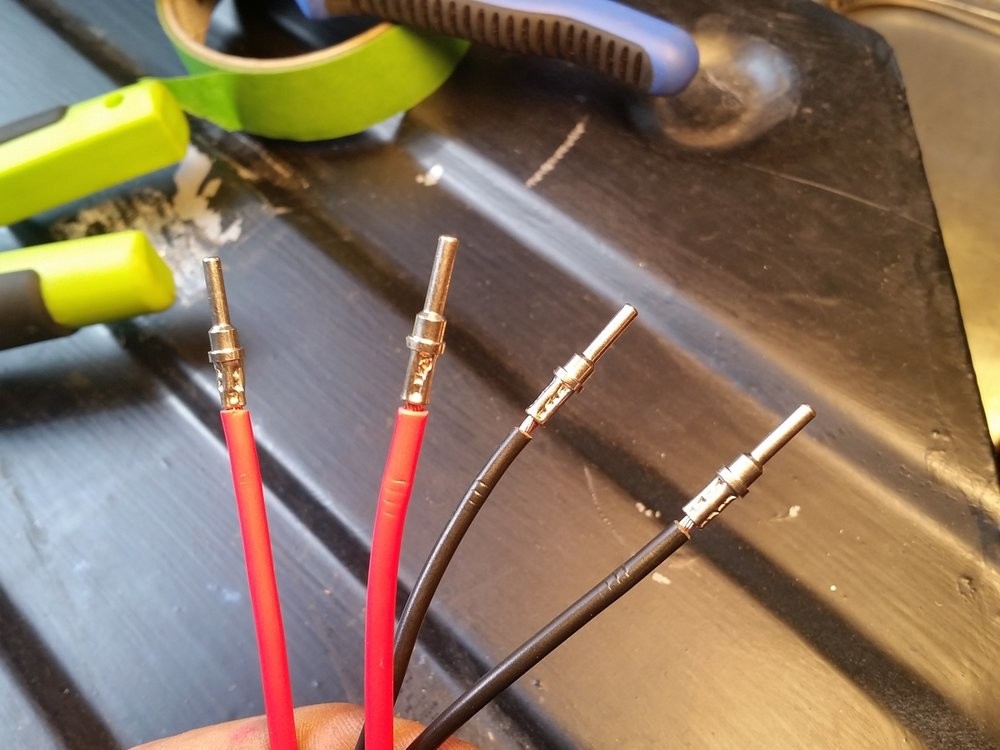
This new capacitance fuel level sender needs ground & 12V in addition to the level signal, so that was some extra wiring needed.

Next up, I needed to make an easily-accessible fuse block center in the trunk, next to the battery. Again I used the fixturing table to mock up the dimensions of the batter tray and battery profile, to make sure the bracket hugs the battery closely but not too closely...
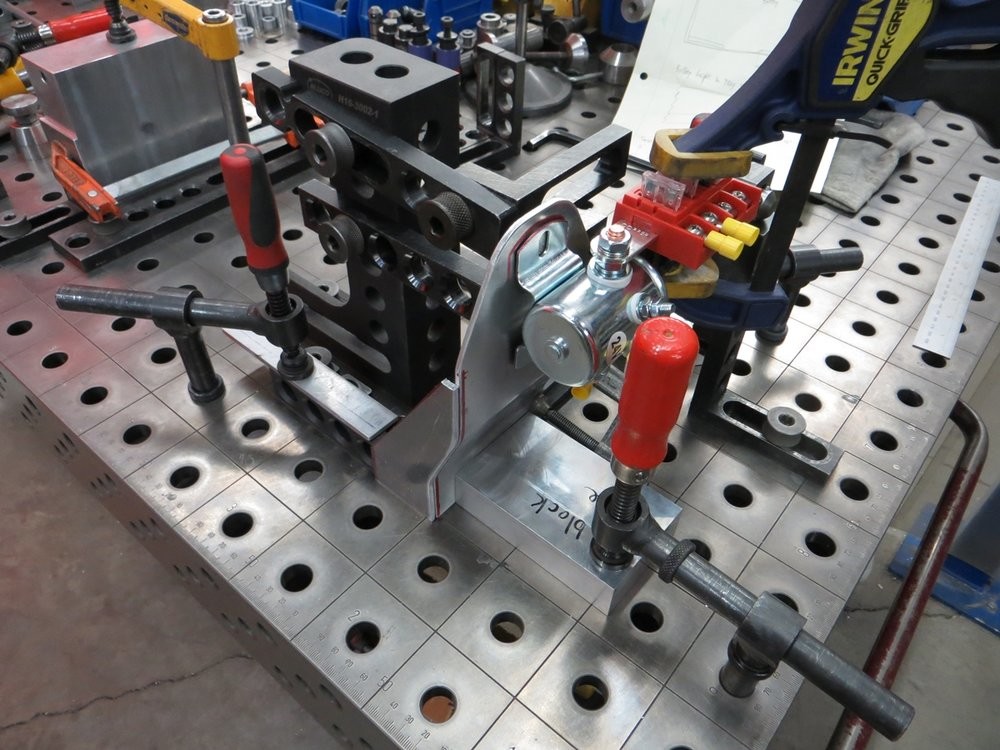
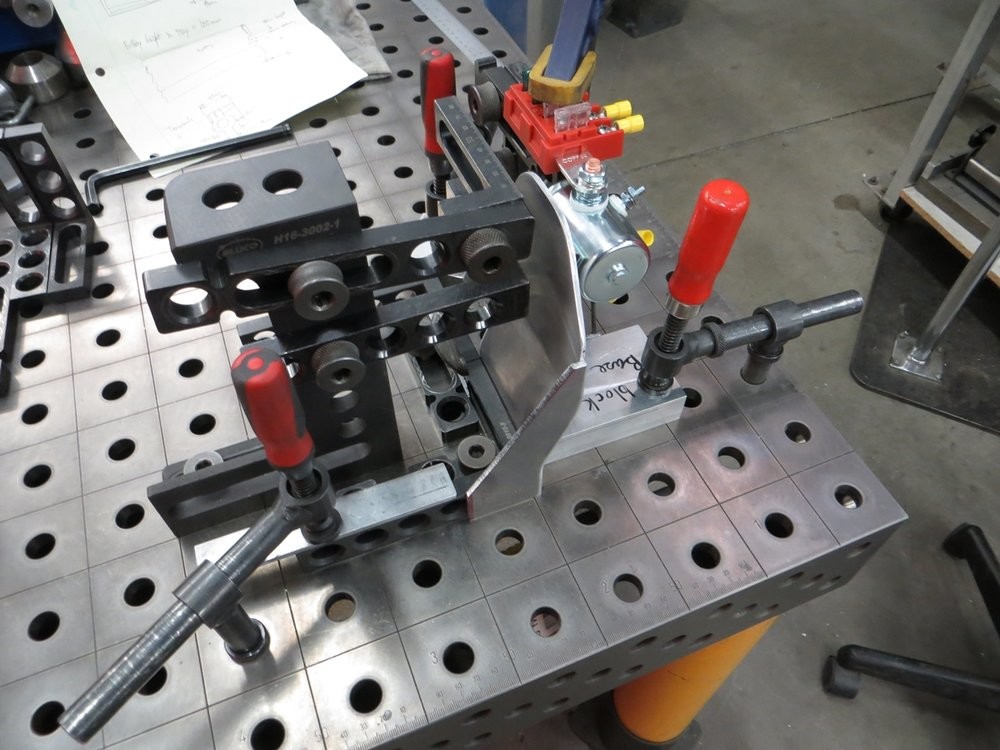
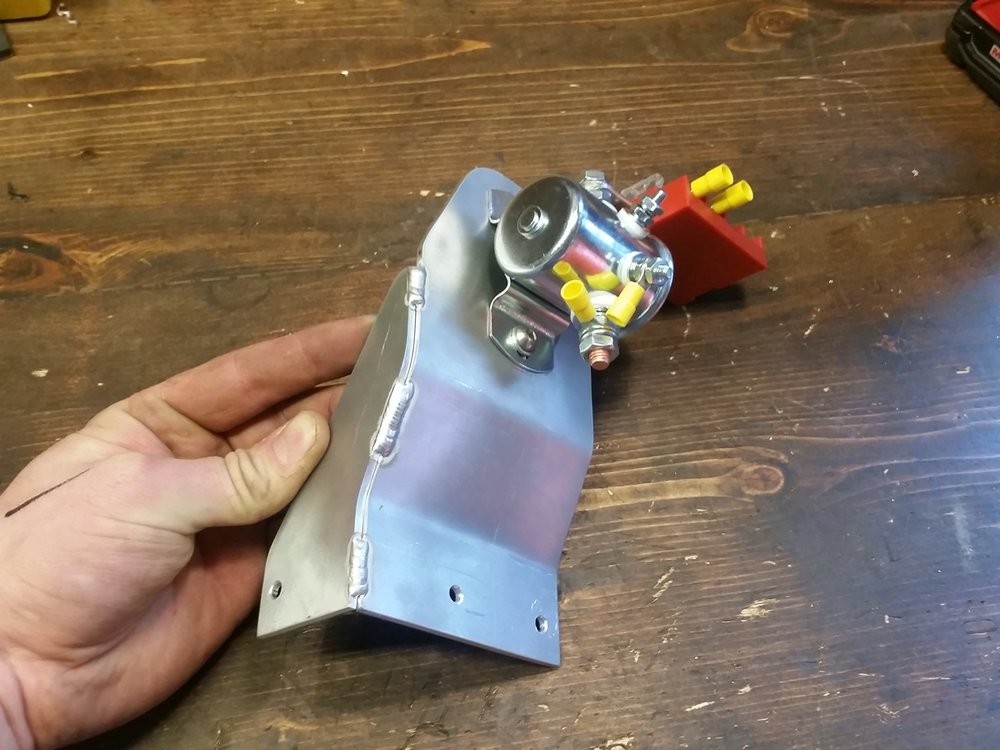

This is the battery tray I made years ago, bolts thru the trunk floor.
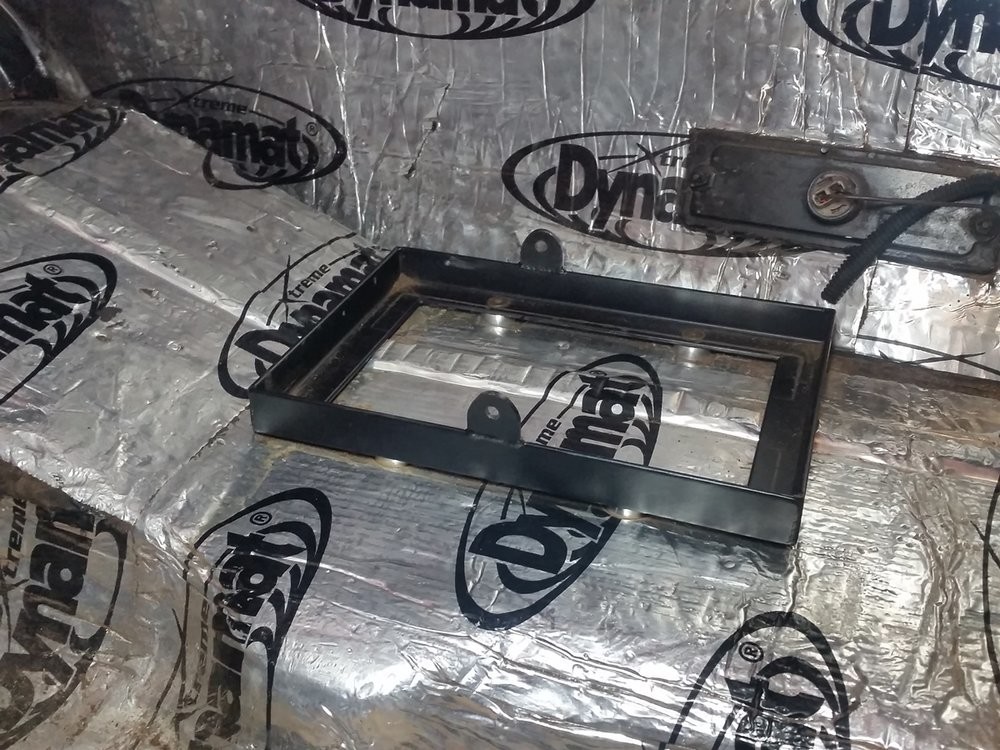

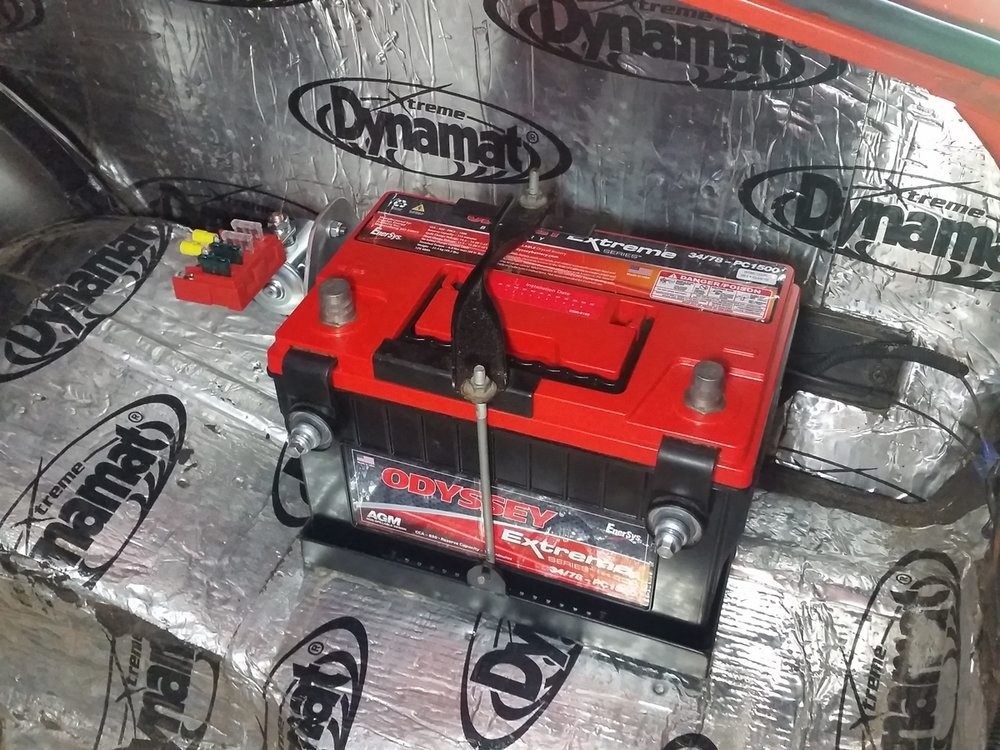

Two of the fuses (25A) are between the 85A solenoid output and the fuel pumps, and the third fuse (5A) is between the solenoid and the fuel level sender.
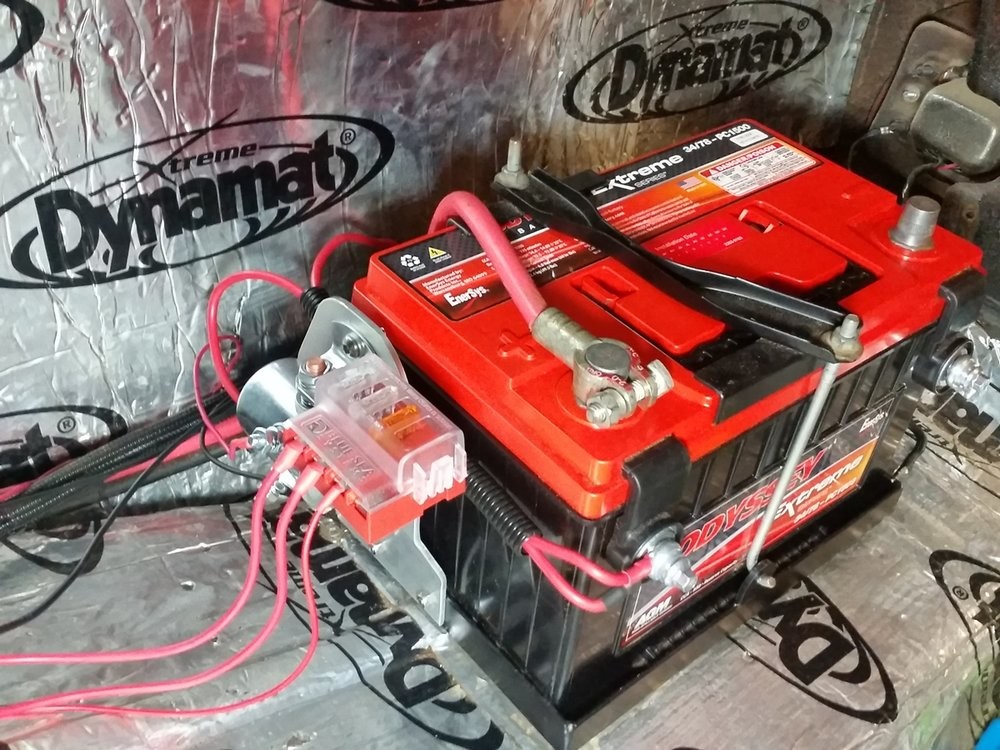
While the car was jacked up, I wanted to lower the trans and pull the reverse lockout solenoid out to modify it.
I have no issues "keeping it simple" and having to override the spring in it to engage reverse, but since I've swapped in a 4th gen Camaro OEM T56 Hurst short shifter, the effort to engage the lockout spring increased to an annoyingly high amount.
***NERD ALERT*** I used our huge universal push/pull tester to see what the spring rate of the reverse lockout solenoid...
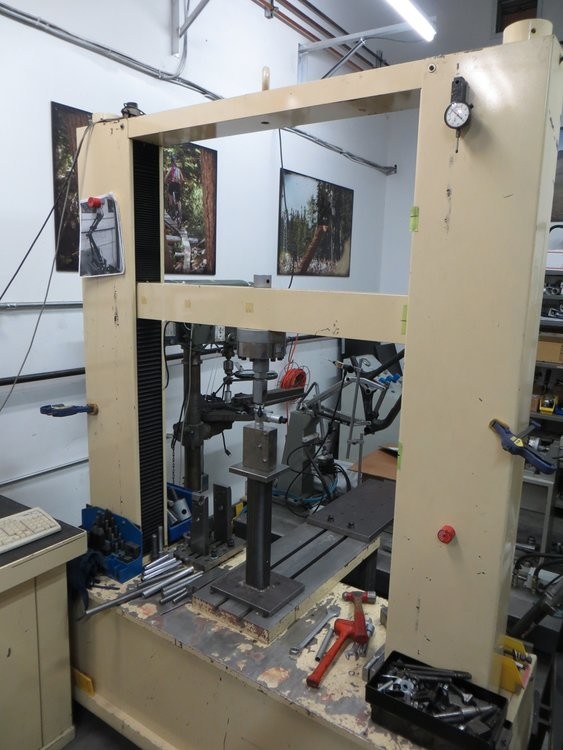
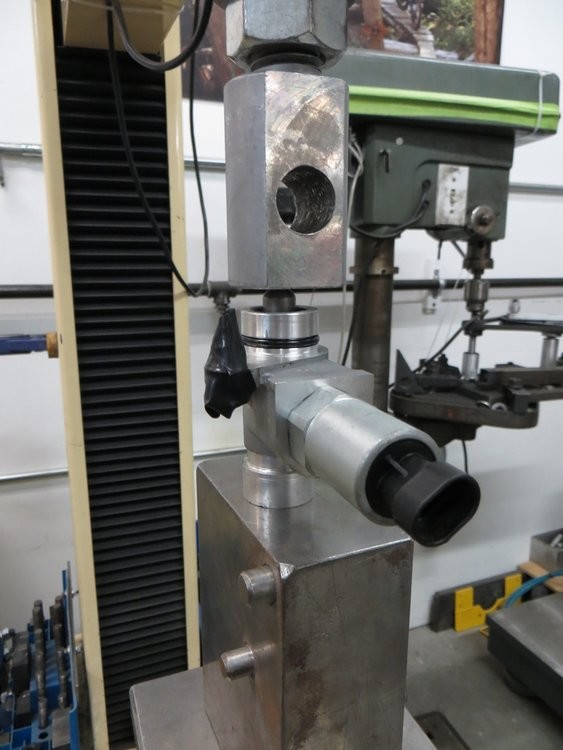
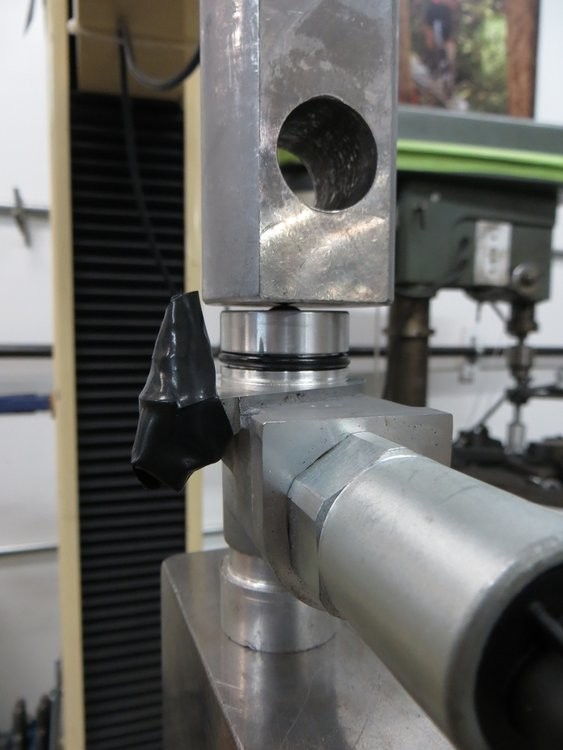
The spring was preloaded quite a bit, which explains the quick jump in spring rate at the beginning. 127N force (238-111) for 7mm travel equates to 101 lbs/in spring rate... stiff!!
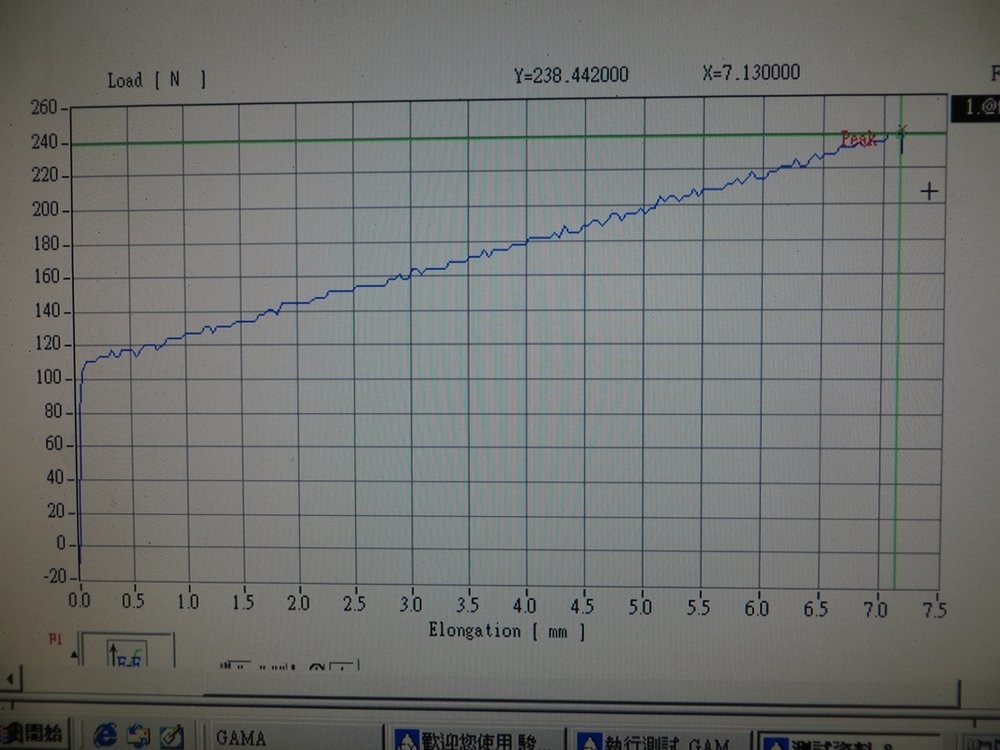
To get a more accurate reading of the spring rate without the preload, I tested just the spring itself...
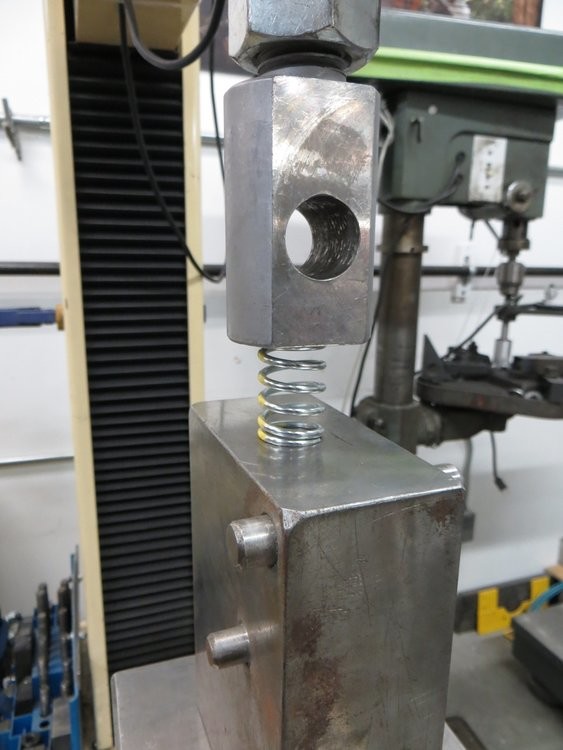
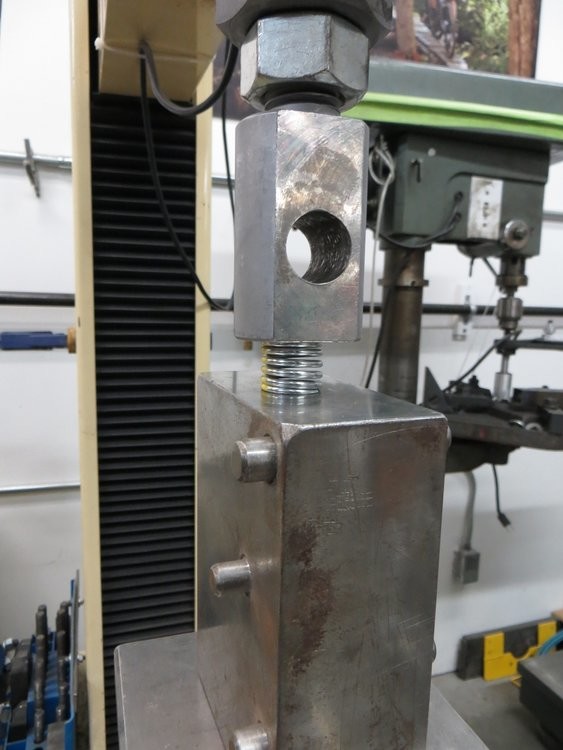
It took 225N force for 13.6mm travel, so 94.5 lb/in.. I'll aim to roughly half this spring rate with a new setup to start.
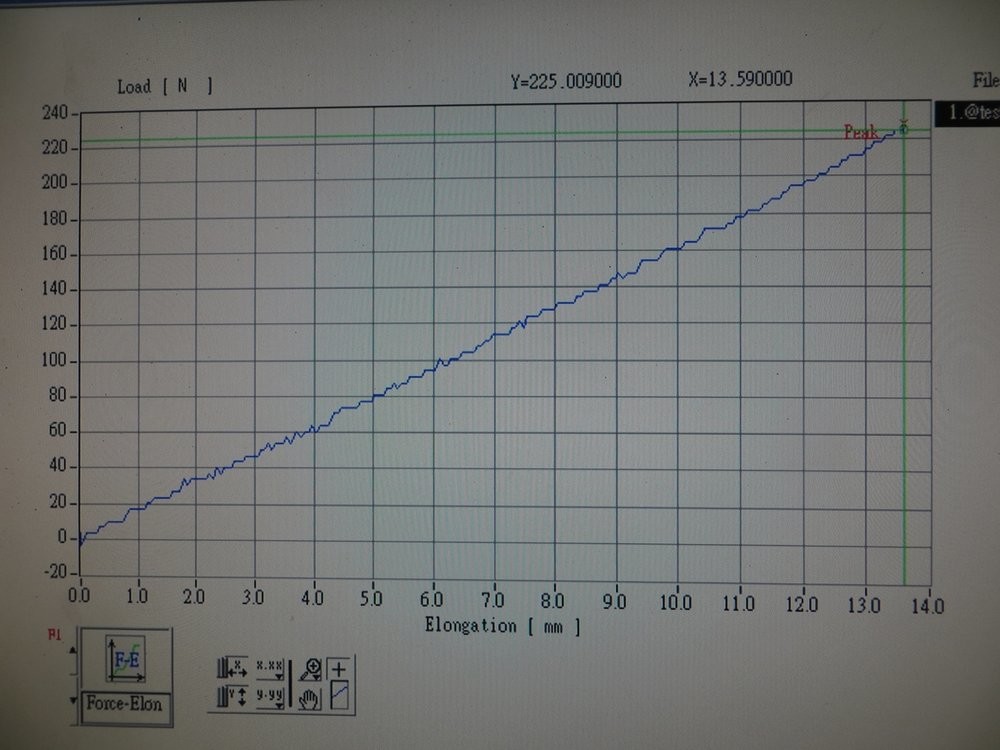
I went to the local auto parts store and found an assortment of springs to test. I needed it to be 7/8" outer diameter or less, to fit inside the lockout housing, but I was flexible on free length, wire diameter, and outer diameter.
After testing several, I settled on this spring as the base.. 7/8" OD with a 0.080" wire diameter...
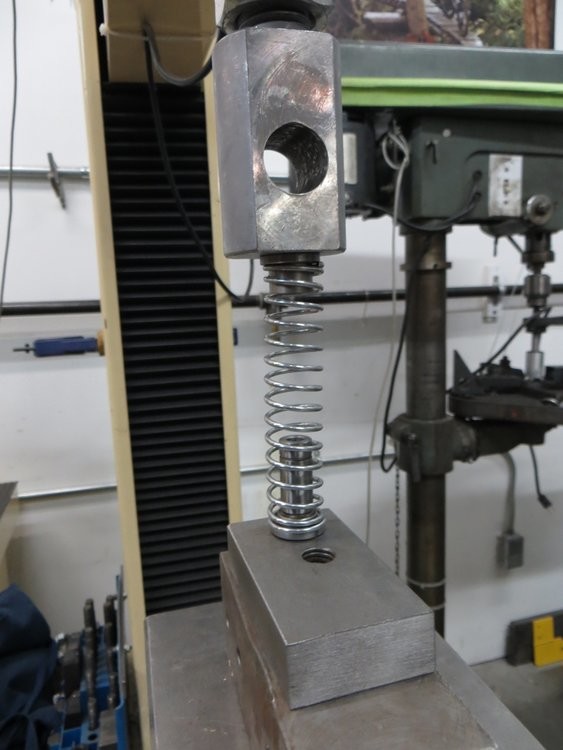
I cut the spring down in length until it was the right length (to bump up the spring rate), then I made a 3.5mm thick spacer to preload the spring to bump up the starting force...
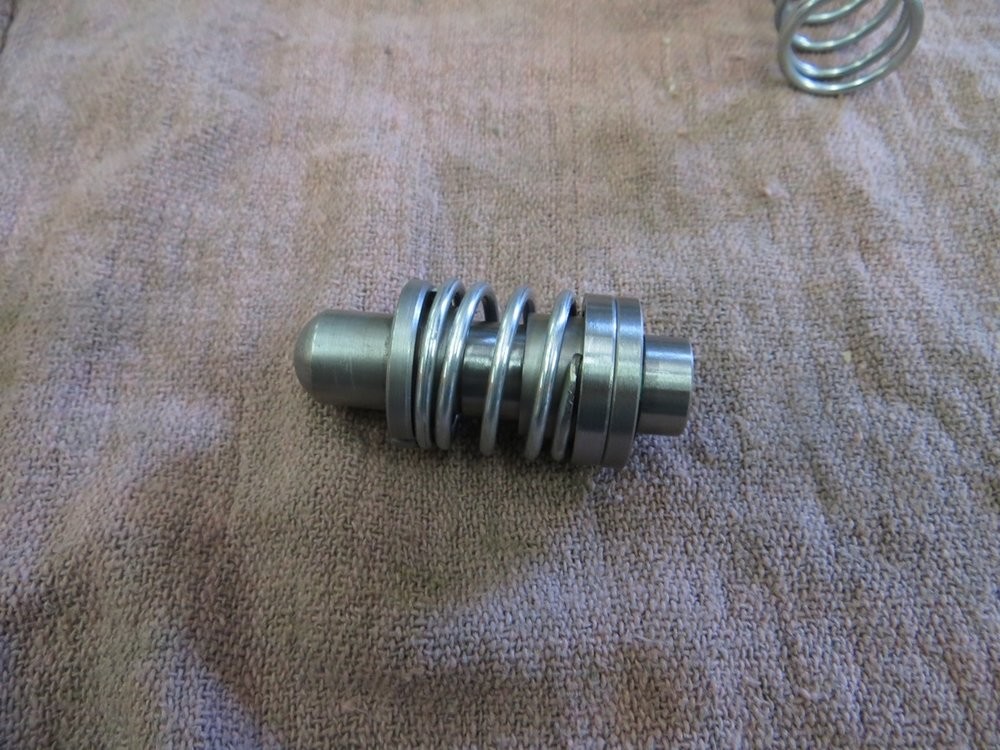
Fully compressed, no coil bind...

New setup is 60N force for 7mm travel, so 49 lb/in.. a good starting point to test...

While I was doing reverse lockout stuff, I decided to tweak the shifter position a bit too, to push the shift **** forward a bit but more importantly to angle it left, moving it closer to the steering wheel. So I made this little angled wedge threaded adapter...
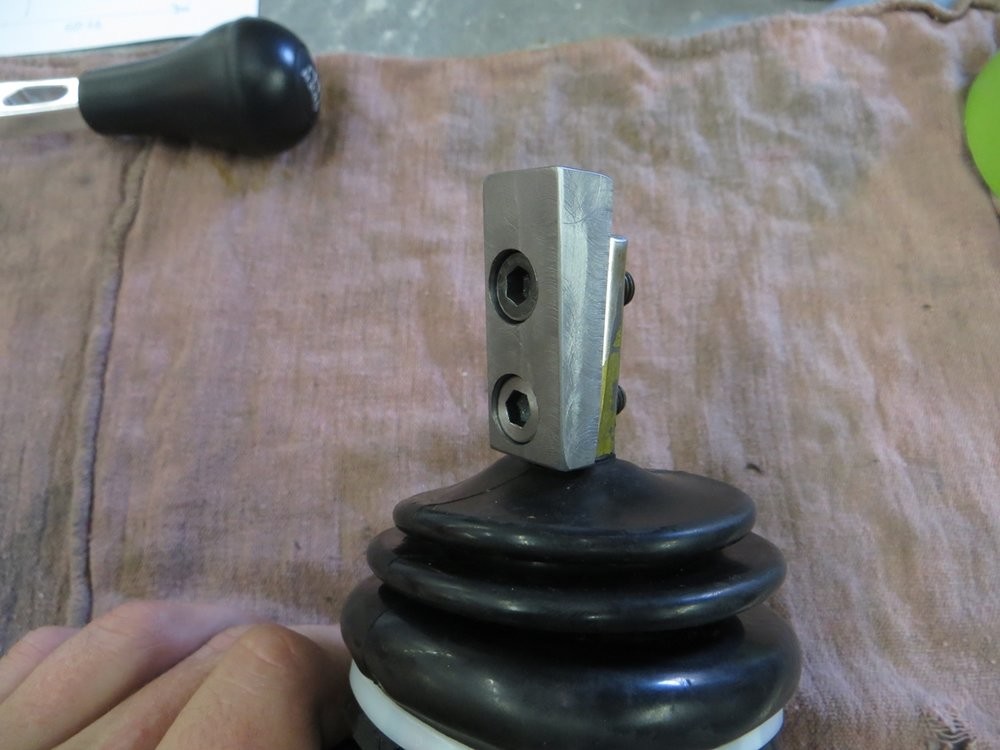
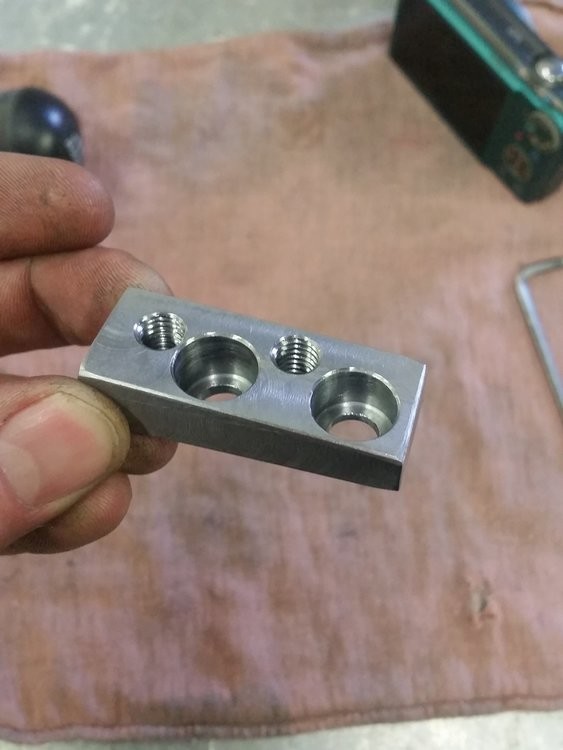

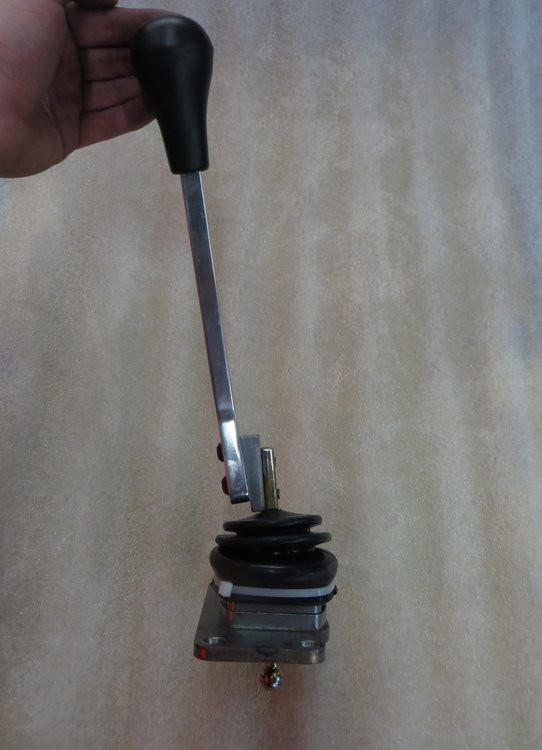
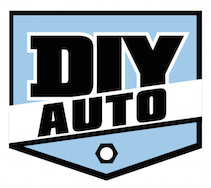
Wow thanks for sharing!
Posted by Diggymart on 3/3/19 @ 12:40:25 AM